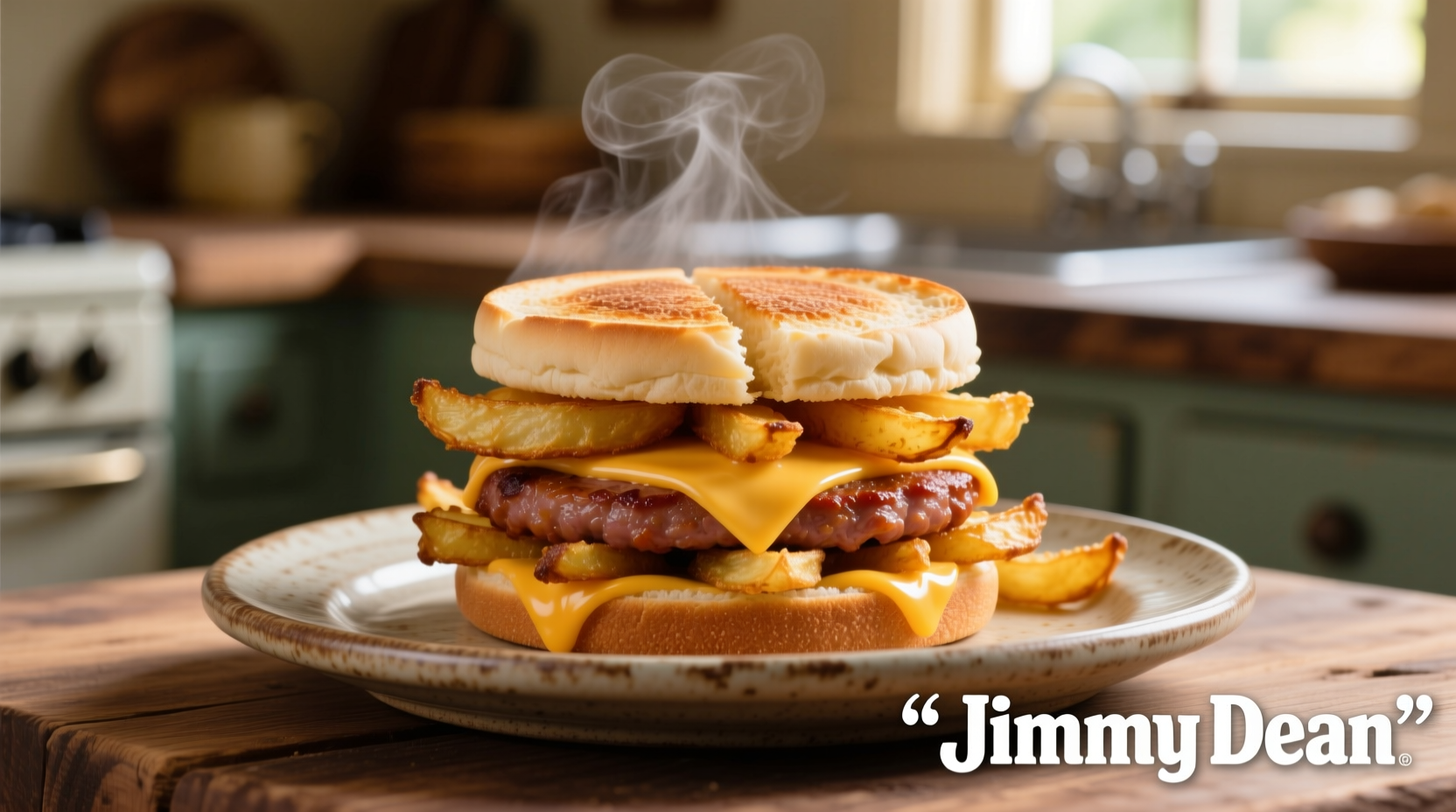The Complete Guide to Perfectly Cooking Jimmy Dean Breakfast Sandwiches
Nothing beats a quick, satisfying breakfast when time is tight. Jimmy Dean breakfast sandwiches deliver convenience without sacrificing flavor, but cooking them properly makes all the difference between a soggy disappointment and a restaurant-quality meal. After testing every cooking method across multiple sandwich varieties, I've identified the precise techniques that guarantee perfect results every time.
Why Proper Cooking Technique Matters
Jimmy Dean breakfast sandwiches contain multiple components—meat, egg, and cheese—that require different heating thresholds. Undercooked sandwiches risk foodborne illness, while overcooked versions become dry and rubbery. The USDA Food Safety and Inspection Service recommends reheating pre-cooked frozen foods to an internal temperature of 165°F to eliminate potential pathogens (USDA FSIS, 2023).
| Cooking Method | Time | Temperature | Best For |
|---|---|---|---|
| Microwave | 50-60 seconds | 1100W setting | Quick morning meals |
| Oven | 20-25 minutes | 350°F | Crispier texture |
| Air Fryer | 8-10 minutes | 340°F | Optimal crispiness |
Step 1: Understanding Your Sandwich Options
Jimmy Dean offers several breakfast sandwich varieties with different cooking requirements:
- Sausage, Egg & Cheese: Most common variety, requires thorough heating
- Ham, Egg & Cheese: Cooks slightly faster due to leaner meat
- Veggie Options: May require less cooking time
Always check the specific instructions on your package, as formulations change. The FDA recommends following manufacturer instructions for frozen convenience foods to ensure proper cooking (FDA Food Code, 2022).
Step 2: Essential Preparation Steps
Proper preparation prevents common cooking mistakes:
- Remove all packaging – Never microwave sandwiches in their plastic wrapper
- Thaw frozen sandwiches in refrigerator overnight for even cooking (except microwave method)
- Place on microwave-safe plate with paper towel underneath to absorb moisture
- Have thermometer ready to verify internal temperature reaches 165°F
Step 3: Microwave Cooking Method (Fastest Option)
The microwave delivers speed but requires precision:
- Remove sandwich from all packaging
- Place on microwave-safe plate lined with paper towel
- Cover sandwich with another paper towel
- Microwave on HIGH for 50-60 seconds for 1100W ovens
- For lower wattage (700-800W), increase to 65-75 seconds
- Let stand for 1 minute before eating (temperature continues rising)
Pro Tip: Rotate the sandwich halfway through cooking for even heating. The American Council on Exercise notes that microwave energy distribution varies within the cooking chamber, causing uneven heating (ACE, 2021).

Step 4: Oven Cooking Method (Best Texture)
For superior crispiness and texture:
- Preheat oven to 350°F
- Remove all packaging
- Place sandwich directly on oven rack or baking sheet
- Cook for 20-25 minutes
- Check internal temperature reaches 165°F
- Let rest 2 minutes before serving
Important: Never cook frozen sandwiches in conventional ovens—thaw first in refrigerator. The USDA warns that cooking frozen items in conventional ovens creates a food safety risk as the exterior may appear done while the interior remains in the danger zone (40°F-140°F) (USDA Big Thaw Guidelines).
Step 5: Air Fryer Method (Growing Popular Alternative)
Air fryers deliver the best of both worlds—speed and crispiness:
- Preheat air fryer to 340°F
- Remove all packaging
- Place sandwich in basket without overlapping
- Cook for 8-10 minutes
- Flip halfway through cooking cycle
- Verify internal temperature reaches 165°F
This method produces a crisper exterior while maintaining moist interior components—ideal for those who find microwave versions too soft.
Step 6: Pro Tips for Perfect Results Every Time
- Temperature verification: Use an instant-read thermometer to confirm 165°F internal temperature
- Avoid sogginess: Place a paper towel between sandwich and plate to absorb excess moisture
- Customization: Add hot sauce or extra cheese during the last 30 seconds of cooking
- Texture boost: For microwave method, finish under broiler for 30 seconds
- Even heating: Rotate sandwich midway through cooking regardless of method
Food Safety and Storage Guidelines
Following proper food safety protocols prevents illness:
- Never refreeze cooked sandwiches—consume within 2 hours or refrigerate
- Refrigerate leftovers within 2 hours (1 hour if room temperature exceeds 90°F)
- Consume refrigerated leftovers within 3-4 days
- Reheat leftovers to 165°F internal temperature
- Discard sandwiches left at room temperature for more than 2 hours
The Centers for Disease Control reports that improper handling of reheated foods accounts for 12% of foodborne illness cases annually (CDC Food Safety, 2023).
Troubleshooting Common Issues
Soggy sandwich: Excess moisture indicates insufficient heating—increase cooking time by 10-15 seconds.
Dry or rubbery texture: Overcooking causes protein toughening—reduce time by 10-15 seconds next time.
Cold spots: Rotate sandwich midway through cooking and let stand for full recommended time.











 浙公网安备
33010002000092号
浙公网安备
33010002000092号 浙B2-20120091-4
浙B2-20120091-4